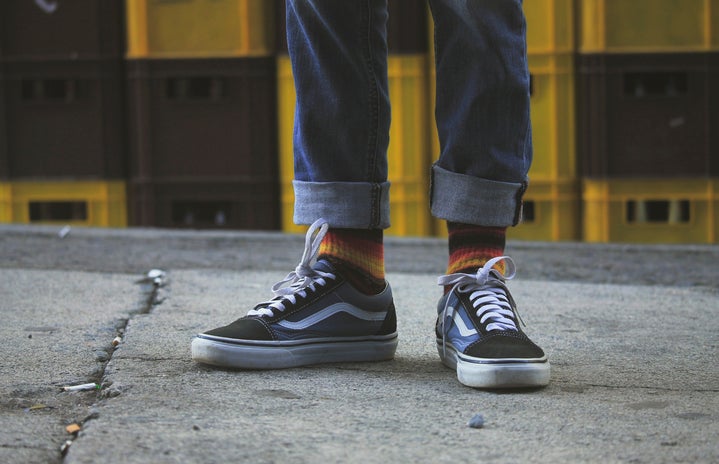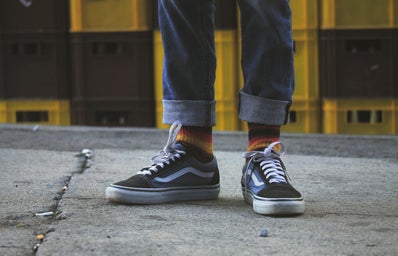Several short months ago, I made a decision that I am still surprised I stood by. That decision was to think twice about the clothing I purchased and to understand the effects of my shopping habits.
Let me tell you that I was always the type of person who enjoyed filling up an online cart (don’t worry, I never actually spend hundreds of dollars at once). I would frequent online stores such as Forever 21 and H&M, and that habit began many years prior when I first started shopping at these stores as a pre-teen. It was almost therapeutic to continuously scroll and pick out items that expressed my personality and sense of style. I hadn’t realized then, but I definitely fell into the fast fashion trap.
The endless racks of new clothing and the possibility of filling up my closet with pieces I liked at affordable prices constantly blinded me. Ironically, I’ve always felt uncomfortable spending money, so being able to get quite a few things at cheap prices was a match made in heaven for me.
Despite the convenience of shopping at these stores, I realized that I needed to make a conscious effort to reverse these shopping habits. I could no longer ignore or brush off the environmental issues that I read about on a daily basis. And yes, my personal choices may seem small in the grand scheme of things, but I know that my switching one damaging action for a positive one is how change occurs.
This brings me to clothing waste and the decision I made to reduce my personal contributions to the issue.
Honestly, I can’t even really remember when I started to seriously consider clothing waste and how it’s tied to the fast fashion industry or what truly caused the shift in my habits. All I can say for sure is that the person obsessed with scrolling endlessly on the websites of my favorite stores has changed quite a bit over the last several months.
I think this desire to introduce cleaner choices into my life began way before clothing was even something I was interested in. I remember small moments as a young child that revealed my awareness of the need to think twice about our own actions and habits. I would (and still continue to do so) cringe when I hear a faucet running while someone is brushing their teeth. I’ve also made more of an effort to purchase products housed in glass or recycled materials.
I started on this (very slow) journey to making cleaner shopping choices, and I’m going to share with you just how I go about getting my fill of shopping with a slightly greener twist.
What is “fast fashion”?
Talking about the term “fast fashion” seems like a good place to start. Many of you are probably very familiar with the term and do not need an explanation, but this is definitely a good place to start in order to understand the issue at hand. According to Good on You, which curates ratings to determine how ethical and sustainable a brand is, refers to fast fashion as “cheap, trendy clothing, that samples ideas from the catwalk or celebrity culture and turns them into garments in high street stores at breakneck speed.” Basically, the clothing is cheap and very low in quality.
While low-quality clothing isn’t great, you’re probably wondering what could be so wrong with having trendy clothing at affordable prices. Well, let’s break it down. The quick turnaround of clothing being produced for consumers perpetuates a social culture encouraging disposable clothing. Think of that outfit you bought for a special night out or a cool two-piece set for the festival you attended. Did you purchase those thinking you’d wear them multiple times? Most likely not. And that’s the issue.
Because the clothing is relatively affordable, we view it as not very valuable and easy to tuck into the darkest corner of our closet or worse, just dump into the trash to be forgotten. The mass production of styles will continue to encourage consumers to buy more and toss those clothes already hanging up in your closet, especially since that T-shirt you wore once already has a tear in the seam because it is made with poor-quality materials.
How I shop
Now onto the fun part. My love for curating a closet with items I love has not dampened during this journey to living a more sustainable life. If anything, I now have a deeper appreciation for the freedom of expression that clothing provides.
Instead of heading to the mall or hopping onto my computer to shop online, I instead turn to thrift stores and apps/websites such as Poshmark and Depop. And let me tell you that I never feel as though I am missing out on my typical shopping experience because, essentially, nothing has changed. I can still thumb through clothing items online or browse racks at stores. The difference is that I am giving a second (or maybe even third) life to the clothing items I purchase instead of buying things brand new.
Aside from avoiding adding more clothing waste, I am actually picking up items of better quality. Many of the things I’ve picked up at thrift stores are nicer brands and made of higher-quality materials. That’s definitely a plus in my book. And this doesn’t mean that I don’t still have items from H&M or Forever 21 –– I actually sometimes purchase those clothing items from the resale apps I mentioned before if I think the item is worth it. You just have to keep in mind that buying secondhand means keeping a piece of clothing out of landfills.
Whether you decide that now is the time to make some changes to your shopping habits or not, I hope you realize that giving up fast fashion does not mean giving up trendy and affordable clothing. It really just means that you are going to seek other, more sustainable, methods to fill up your closet with clothing you love. You can even start by just refusing plastic bags at checkout and deciding to bring along a couple of reusable totes the next time you head to the mall. You’ve heard it before, but it’s the little things that make a difference in the long run.


